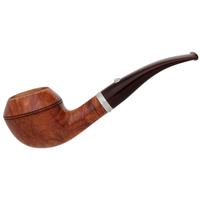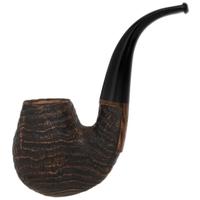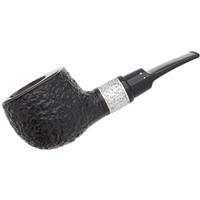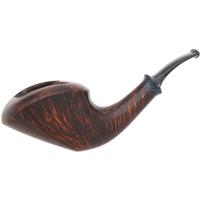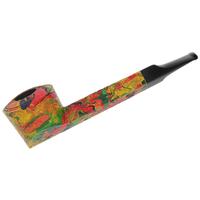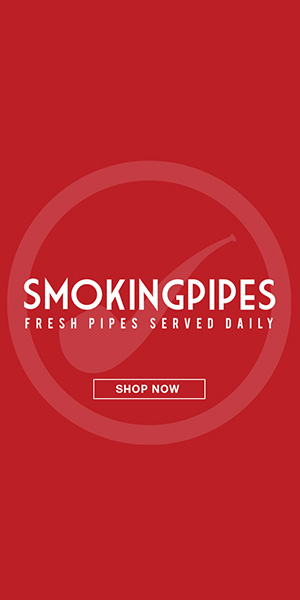Coumarin in Pipe Tobacco
- Thread starter damacene
- Start date
I actually looked into the matter with the help of a lawyer friendoid. The odd part is that's it's not specifically banned but in effect is. Like it's sloppier and messier then any legal issue should ever be. Part of what makes correct it not a priority is how the law has been applied and how it's written aren't explicit enough to make it simple.You'd think if it was that toxic perrettis wouldn't be allowed to use it.
Fun side note. Absinthe was never illegal in the U.S.A.. People who wanted to fight that law found out the law was never actually passed even though it was fully intented to.
It turns out the actual issue with absinthe was that a specific molecule, thujone, was deemed illegal, and it was assumed that thujone was contained in absinthe as it is found in one of the main herbs used (wormwood). However, chemical analysis of absinthe done (by American chemist Ted Breaux, among others) in the early 21st century revealed that significant amounts of thujone do not make it into the finished product after distilling (the molecule doesn't carry over in any notable quantity), so even vintage "pre-ban" absinthes contained little to none of the banned substance, certainly less than the limits allowed. Results of this analysis are why absinthe returned to the world market in the early 2000's.Fun side note. Absinthe was never illegal in the U.S.A.. People who wanted to fight that law found out the law was never actually passed even though it was fully intented to.
An even more interesting note, absinthe made in the vintage style never stopped being produced in Tarragona, Spain after France and Switzerland banned it in the early part of the 20th century, by monks who took the recipe over the Andorra mountains with them. Czech "absinth" (AKA "crapsinthe"), which was popular among American college students during the 1980's and 1990's, is a modern abomination that has little to nothing to do with vintage recipes or flavor.
Source: I used to be quite active on absinthe discussion forums for 10 years or so as the product was returning to the market. I am friends with several artisan/hobby absinthe distillers and have about 40 different bottles on my home bar. Which is probably why I also love anise/licorice-topped tobacco. I'll smoke some War Horse (or even Mixture 79) any day, all day!
Even more interesting side note: Ted Breaux, a Louisiana native, made a very small batch perique-based liqueur. I have a bottle which I bought back in the day but have never opened. I need to fish it off the back of the shelf sometime soon.
Ooh, I may need to pick your brain on the topic. I've tried a few over the years, but there are so many options and opinions, it's kind of daunting!Source: I used to be quite active on absinthe discussion forums for 10 years or so as the product was returning to the market. I am friends with several artisan/hobby absinthe distillers and have about 40 different bottles on my home bar. Which is probably why I also love anise/licorice-topped tobacco. I'll smoke some War Horse (or even Mixture 79) any day, all day!
Yes. And when people tried to fight the law, they basically found out it was never put through unto the books. Which is crazy. Because they did put exceptions into law. That vintage bottles were fine.It turns out the actual issue with absinthe was that a specific molecule, thujone, was deemed illegal, and it was assumed that thujone was contained in absinthe as it is found in one of the main herbs used (wormwood).
For a while people thought that the molecule degraded over time but found out nope that's not true and it never had the levels people thought it did.However, chemical analysis of absinthe done (by American chemist Ted Breaux, among others) in the early 21st century revealed that significant amounts of thujone do not make it into the finished product after distilling (the molecule doesn't carry over in any notable quantity), so even vintage "pre-ban" absinthes contained little to none of the banned substance, certainly less than the limits allowed. Results of this analysis are why absinthe returned to the world market in the early 2000's.
One theory on absinthe too is that the rumors about it's crazy effects are all because of people making and selling black market fake stuff.An even more interesting note, absinthe made in the vintage style never stopped being produced in Tarragona, Spain after France and Switzerland banned it in the early part of the 20th century, by monks who took the recipe over the Andorra mountains with them. Czech "absinth" (AKA "crapsinthe"), which was popular among American college students during the 1980's and 1990's, is a modern abomination that has little to nothing to do with vintage recipes or flavor.
Source: I used to be quite active on absinthe discussion forums for 10 years or so as the product was returning to the market. I am friends with several artisan/hobby absinthe distillers and have about 40 different bottles on my home bar. Which is probably why I also love anise/licorice-topped tobacco. I'll smoke some War Horse (or even Mixture 79) any day, all day!
Even more interesting side note: Ted Breaux, a Louisiana native, made a very small batch perique-based liqueur. I have a bottle which I bought back in the day but have never opened. I need to fish it off the back of the shelf sometime soon.
I always thought absinthe was banned because it made you so drunk you might cut off part of your ear, like Van Gough.
When I was in college the winos on Kansas City’s skid row would eventually sink to drinking “fortified wine” of which Mogen David 20-20 (Mad Dog Twenty Twenty) was the most famous brand.
20 ounces of 20% alcohol (forty proof) sold for something like 69 cents.
Midnight Choir
Many localities banned fortified wine, but mostly better economic conditions made MD 20-20 go away in the original, classic “wino flask”.
We still sing those old skid row songs at jam sessions.
Here’s an extra pitiful one,,;
Mama, Ain’t That Daddy
When I was in college the winos on Kansas City’s skid row would eventually sink to drinking “fortified wine” of which Mogen David 20-20 (Mad Dog Twenty Twenty) was the most famous brand.
20 ounces of 20% alcohol (forty proof) sold for something like 69 cents.
Midnight Choir
Many localities banned fortified wine, but mostly better economic conditions made MD 20-20 go away in the original, classic “wino flask”.
We still sing those old skid row songs at jam sessions.
Here’s an extra pitiful one,,;
Mama, Ain’t That Daddy
Last edited:
Idk, if I worked for the FDA I'd be afraid of Steve.You'd think if it was that toxic perrettis wouldn't be allowed to use it.
I was actually led to believe that the original ban on absinthe was something pushed by brandy and cognac producers because it was cutting into their sales so they started pushing all sorts of rumors about it and paying off politicians.It turns out the actual issue with absinthe was that a specific molecule, thujone, was deemed illegal, and it was assumed that thujone was contained in absinthe as it is found in one of the main herbs used (wormwood). However, chemical analysis of absinthe done (by American chemist Ted Breaux, among others) in the early 21st century revealed that significant amounts of thujone do not make it into the finished product after distilling (the molecule doesn't carry over in any notable quantity), so even vintage "pre-ban" absinthes contained little to none of the banned substance, certainly less than the limits allowed. Results of this analysis are why absinthe returned to the world market in the early 2000's.
An even more interesting note, absinthe made in the vintage style never stopped being produced in Tarragona, Spain after France and Switzerland banned it in the early part of the 20th century, by monks who took the recipe over the Andorra mountains with them. Czech "absinth" (AKA "crapsinthe"), which was popular among American college students during the 1980's and 1990's, is a modern abomination that has little to nothing to do with vintage recipes or flavor.
Source: I used to be quite active on absinthe discussion forums for 10 years or so as the product was returning to the market. I am friends with several artisan/hobby absinthe distillers and have about 40 different bottles on my home bar. Which is probably why I also love anise/licorice-topped tobacco. I'll smoke some War Horse (or even Mixture 79) any day, all day!
Even more interesting side note: Ted Breaux, a Louisiana native, made a very small batch perique-based liqueur. I have a bottle which I bought back in the day but have never opened. I need to fish it off the back of the shelf sometime soon.
I don't know anything about Ted Breaux, but I did have a glass or two of perique liqueur with Mark Ryan when he invited me up to L.A. Poché for a visit. It is an absinthe based liqueur. The bottle he had was from France and is extremely hard to find because it was such a limited production. Honestly, I am not even sure that it is still made
Many people have died from drinking clean, pure water.Yes it is.
And fun fact no one has ever been a documented poisoning from tonka beans which have been used and are in use all over the world for at least a few generations.
Worry about it is silly and the ban is stupid.
Fun fact lots of things we consume with zero health issues would be poisonous in unrealistically high doses. Some vitamins can kill you or make you sick if you have too much of them.
Hyperhydration can affect electrolytes and kill you.
The fascinating case of Jean Lanfray led to almost all Europe banning absinthe.
 en.m.wikipedia.org
en.m.wikipedia.org
Some of the most famous novelists and writers of the late nineteenth and early twentieth century wrote about the “green fairy” that caused madness from drinking absinthe.
Not only absinthe, but all alcoholic beverages were subject to the world wide prohibition movement.
Over in Sedalia last week I saw a sign on a beautiful public park—
No tobacco use in park
Which brought to mind the wisdom of C.S. Lewis about moral busybodies.
Of all tyrannies, a tyranny sincerely exercised for the good of its victims may be the most oppressive. It would be better to live under robber barons than under omnipotent moral busybodies. The robber baron's cruelty may sometimes sleep, his cupidity may at some point be satiated; but those who torment us for our own good will torment us without end for they do so with the approval of their own conscience. They may be more likely to go to Heaven yet at the same time likelier to make a Hell of earth. This very kindness stings with intolerable insult. To be "cured" against one's will and cured of states which we may not regard as disease is to be put on a level of those who have not yet reached the age of reason or those who never will; to be classed with infants, imbeciles, and domestic animals.
Jean Lanfray - Wikipedia
Some of the most famous novelists and writers of the late nineteenth and early twentieth century wrote about the “green fairy” that caused madness from drinking absinthe.
Not only absinthe, but all alcoholic beverages were subject to the world wide prohibition movement.
Over in Sedalia last week I saw a sign on a beautiful public park—
No tobacco use in park
Which brought to mind the wisdom of C.S. Lewis about moral busybodies.
Of all tyrannies, a tyranny sincerely exercised for the good of its victims may be the most oppressive. It would be better to live under robber barons than under omnipotent moral busybodies. The robber baron's cruelty may sometimes sleep, his cupidity may at some point be satiated; but those who torment us for our own good will torment us without end for they do so with the approval of their own conscience. They may be more likely to go to Heaven yet at the same time likelier to make a Hell of earth. This very kindness stings with intolerable insult. To be "cured" against one's will and cured of states which we may not regard as disease is to be put on a level of those who have not yet reached the age of reason or those who never will; to be classed with infants, imbeciles, and domestic animals.
May the gods save us from all the "Mrs. Grundys" and other busybodies that are running around without strait-jackets.The fascinating case of Jean Lanfray led to almost all Europe banning absinthe.
Jean Lanfray - Wikipedia
en.m.wikipedia.org
Some of the most famous novelists and writers of the late nineteenth and early twentieth century wrote about the “green fairy” that caused madness from drinking absinthe.
Not only absinthe, but all alcoholic beverages were subject to the world wide prohibition movement.
Over in Sedalia last week I saw a sign on a beautiful public park—
No tobacco use in park
Which brought to mind the wisdom of C.S. Lewis about moral busybodies.
Of all tyrannies, a tyranny sincerely exercised for the good of its victims may be the most oppressive. It would be better to live under robber barons than under omnipotent moral busybodies. The robber baron's cruelty may sometimes sleep, his cupidity may at some point be satiated; but those who torment us for our own good will torment us without end for they do so with the approval of their own conscience. They may be more likely to go to Heaven yet at the same time likelier to make a Hell of earth. This very kindness stings with intolerable insult. To be "cured" against one's will and cured of states which we may not regard as disease is to be put on a level of those who have not yet reached the age of reason or those who never will; to be classed with infants, imbeciles, and domestic animals.
Of course there are always multiple motivations for popular movements, and loose coalitions get formed with each group having their (semi-)private reasons; a ban on absinthe was driven by absolute abolitionists who saw this as a first step toward eliminating alcohol, whereas producers of the “more moderate” wine and beer sought it as a way to increase their own sales, etc.I was actually led to believe that the original ban on absinthe was something pushed by brandy and cognac producers because it was cutting into their sales so they started pushing all sorts of rumors about it and paying off politicians.
That’s the liqueur I was referring to. Jade is Ted Breaux’s company. He makes several of the finest modern traditional absinthes on the market. His PF1901 is one of my absolute favorites, a recreation of the original Pernod Fils from before the ban. The color, aroma, and taste are literally intoxicating.I don't know anything about Ted Breaux, but I did have a glass or two of perique liqueur with Mark Ryan when he invited me up to L.A. Poché for a visit. It is an absinthe based liqueur. The bottle he had was from France and is extremely hard to find because it was such a limited production. Honestly, I am not even sure that it is still made
Last edited:
Next time you talk to Mr. Breaux send him thanks from another absinthe appreciator, he really revived the category pretty much all by himself! It's fallen off its big wave of popularity right after it became "legal" again, but there are bars like Maison Premiere in Brooklyn that still showcase it.Of course there are always multiple motivations for popular movements, and loose coalitions get formed with each group having their (semi-)private reasons; a ban on absinthe was driven by absolute abolitionists who saw this as a first step toward eliminating alcohol, whereas producers of the “more moderate” wine and beer sought it as a way to increase their own sales, etc.
That’s the liqueur I was referring to. Jade is Ted Breaux’s company. He makes several of the finest modern traditional absinthes on the market. His PF1901 is one of my absolute favorites, a recreation of the original Pernod Fils from before the ban. The color, aroma, and taste are literally intoxicating.
Another fun fact about the absinthe ban; the study on the effects of thujone, which I believe was the only study cited in the legislative process, was based on feeding huge amounts of thujone to lab animals. The chemical is naturally present in thyme, tarragon, and other herbs in larger amounts than the wormwood (artemisia absinthum) that was the standard ingredient in absinthe.
If I was gonna hijack this thread, I'd talk about the ban on sassafras root, which was based similarly on a single, potentially flawed study.
completely. You know it's a lot less water then people think. And it also fits into the when banning a substance you can't really go on what people could do but instead on what they actually do with it. There are lots of things that could be used all sorts of ways but just aren't.Many people have died from drinking clean, pure water.
Hyperhydration can affect electrolytes and kill you.
Saffron can get you high as heck. Like opiate type highs. But the cost is so insanely high with the amount you would need. That well it's been done it's never going to be a public scourge. Nope instead you have to go on what they actually do with it.
Though the Tonka bean was banned at a time when the science was just starting to reach a point of awareness about what was in different things. A period when even closer to reasonable people were unduly afraid of chemicals in food. So it makes sense, what doesn't make sense is how hard it is to drop what's clearly a mistake. Something where there aren't really any advocates for the continuation of the ban.
I agree with others here that as long as you are not consuming a lot every day it's probably fine; which is true of about anything. Even candy, licorice (the good stuff not imitation) can hurt you.
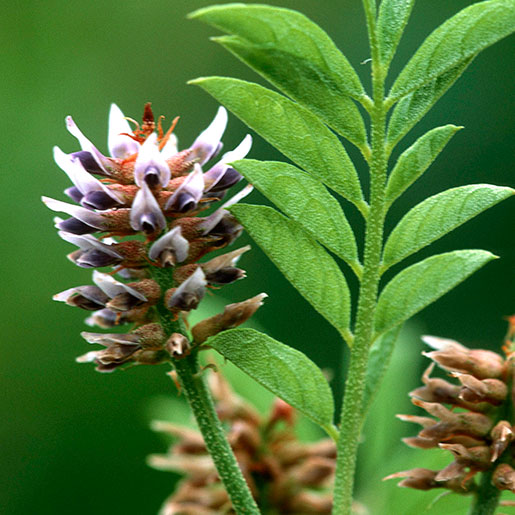
Licorice Root: Usefulness and Safety
This fact sheet provides basic information about licorice root—common names, usefulness and safety, and resources for more information.www.nccih.nih.gov
I used licorice root to help me quit a 30 year, 2 pack-a-day cigarette habit. I would cut them down to 3", whittle the bark off, and chew one after another. They tasted good and replaced the oral fixation of always having a cigarette.
A few months later I read about all the side effects. I slowly cut down and switched to Miswak, which only lasted a few weeks and I was done.
But the licorice root worked great...
I love licorice but rarely have it because it might hurt my liver. I am impressed you had the real deal you had to scrape bark off. I have only had the candy. Is the flavor much more? I am guessing it is.I used licorice root to help me quit a 30 year, 2 pack-a-day cigarette habit. I would cut them down to 3", whittle the bark off, and chew one after another. They tasted good and replaced the oral fixation of always having a cigarette.
A few months later I read about all the side effects. I slowly cut down and switched to Miswak, which only lasted a few weeks and I was done.
But the licorice root worked great...
I wouldn't say more flavorful than candy. It was always bitter to start, but after a short while it sweetened up and left a nice taste...and it lasted an hour or two. The flavor didn't change, though....which is a good thing. Like candy but without the extras like sugar, etc.I love licorice but rarely have it because it might hurt my liver. I am impressed you had the real deal you had to scrape bark off. I have only had the candy. Is the flavor much more? I am guessing it is.
I'd get a pound for around $20 on Amazon....get around 20-30 sticks, which can be cut down to toothpick length. I guess one could leave the bark, but I would never.
They are considered natures toothbrush because they eventually splinter and end up like a paintbrush, which essentially brushes the teeth very well.
Thanks Glad I can order it on amazon.I wouldn't say more flavorful than candy. It was always bitter to start, but after a short while it sweetened up and left a nice taste...and it lasted an hour or two. The flavor didn't change, though....which is a good thing. Like candy but without the extras like sugar, etc.
I'd get a pound for around $20 on Amazon....get around 20-30 sticks, which can be cut down to toothpick length. I guess one could leave the bark, but I would never.
They are considered natures toothbrush because they eventually splinter and end up like a paintbrush, which essentially brushes the teeth very well.



